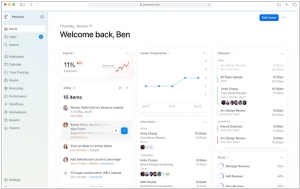Azure Active Directory vs Google Identity Platform
October 11, 2024 | Author: Michael Stromann
8★
Identity tools from Google help you quickly build an auth system that will grow with your business and reduce the friction of getting users into your app.
Azure Active Directory (Azure AD) and Google Identity Platform are both cloud-based identity and access management services, which, in this universe, might sound about as thrilling as a cup of cold tea in a leaky spaceship. But stick with me, because the difference between them is the sort of thing that could cause mild confusion in a parallel dimension. Azure AD, for instance, is Microsoft’s rather serious and suited offering, perfect for enterprises that like their user identities as organized as a filing cabinet in the office of a hyper-efficient bureaucrat. It handles everything from Single Sign-On (SSO) to Multi-Factor Authentication (MFA) and it plays beautifully with other Microsoft products, which is handy if you’ve already sold your soul to the Office 365 gods.
Google Identity Platform, however, is more like that one friend who’s always tinkering with the latest gadget and insists that everything can be fixed with just a bit of code. It’s built for developers who want to add user authentication and authorization to their applications without too much fuss. It does the OAuth and OpenID Connect dance, integrates nicely with Google Cloud and generally makes life easier for those building custom apps. It’s the sort of system that might occasionally say, “Oh, authentication? Yeah, we’ve got that covered. Now, have you seen this neat trick with machine learning?”
The key difference, then, is one of focus. Azure AD is like a grand opera for enterprises, full of structure and security, while Google Identity Platform is more of a jam session for developers, giving them the freedom to build cool things while handling the tricky business of user management. In the end, whether you prefer the symphony or the jam session depends on what kind of orchestra you're conducting—or, perhaps, what kind of planet you're on.
See also: Top 10 Identity Management platforms
Google Identity Platform, however, is more like that one friend who’s always tinkering with the latest gadget and insists that everything can be fixed with just a bit of code. It’s built for developers who want to add user authentication and authorization to their applications without too much fuss. It does the OAuth and OpenID Connect dance, integrates nicely with Google Cloud and generally makes life easier for those building custom apps. It’s the sort of system that might occasionally say, “Oh, authentication? Yeah, we’ve got that covered. Now, have you seen this neat trick with machine learning?”
The key difference, then, is one of focus. Azure AD is like a grand opera for enterprises, full of structure and security, while Google Identity Platform is more of a jam session for developers, giving them the freedom to build cool things while handling the tricky business of user management. In the end, whether you prefer the symphony or the jam session depends on what kind of orchestra you're conducting—or, perhaps, what kind of planet you're on.
See also: Top 10 Identity Management platforms





